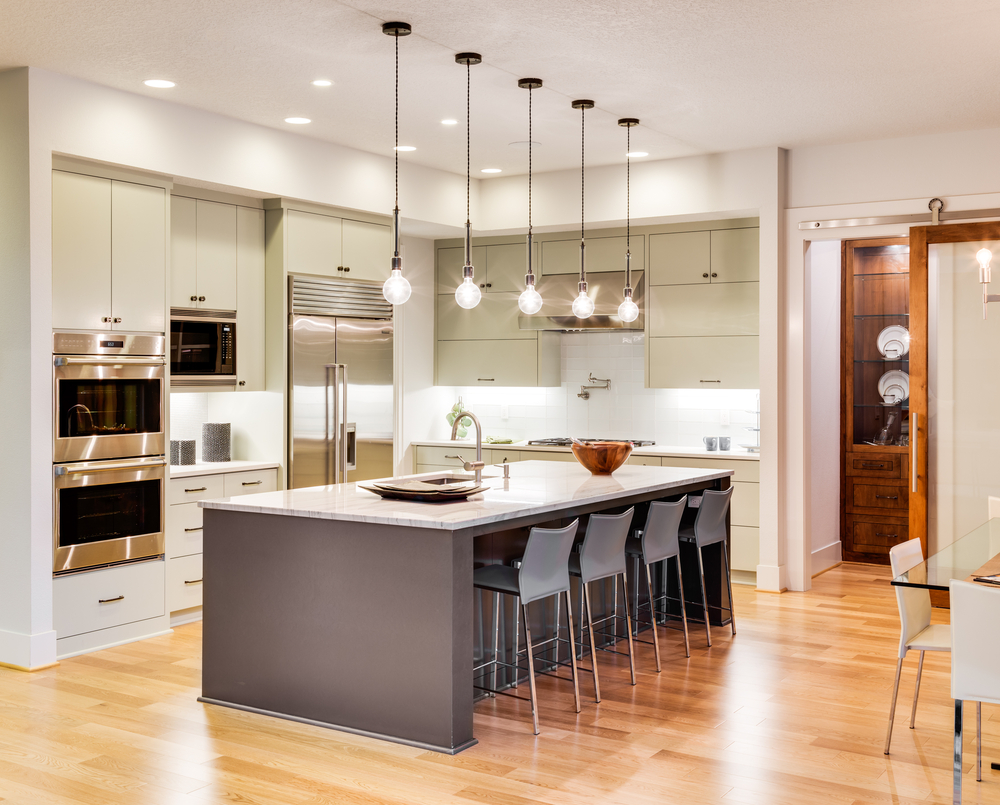 Lighting is an essential part of any design. It can change the mood and vibe of your environment. Even if every aspect is flawlessly crafted, poor lighting will detract from the overall experience. Choosing a stylish pendant or a table lamp that "fits with" the rest of your environment may appear straightforward. On the other hand, architectural, practical lighting fixtures might be far more difficult to select on your own. Professional designers consider lighting the "secret sauce" for making personal living spaces more functional, pleasant, and undoubtedly more attractive.
Lighting is an essential part of any design. It can change the mood and vibe of your environment. Even if every aspect is flawlessly crafted, poor lighting will detract from the overall experience. Choosing a stylish pendant or a table lamp that "fits with" the rest of your environment may appear straightforward. On the other hand, architectural, practical lighting fixtures might be far more difficult to select on your own. Professional designers consider lighting the "secret sauce" for making personal living spaces more functional, pleasant, and undoubtedly more attractive.That isn't to suggest you can't design your bespoke lighting scheme for your house; it's just an issue of knowing what you require. With that in mind, let's take a look at some things to think about while deciding how to illuminate your room.
Decide On The Type Of Lighting You'll Require
In your house, there are three forms of lighting that function together, and you'll need to choose a fixture and bulbs that provide the sort of illumination you require.
- Ambient (General) Lighting refers to a space's total lighting. It is a pleasant quantity of light that allows you to see and navigate a room without glare comfortably. Chandeliers, wall lighting, lamps, track lighting, canned lighting, and other types of illumination are used to achieve this. Using many of these fixtures to create pleasant light is typically a helpful lighting strategy.
- Task Lighting – This is the amount of light needed to cook, study, or perform other daily duties. Pendants, track lighting, and table lamps with shades often provide more excellent light focused on the work. The ideal task lighting provides adequate light without causing glare, which can cause eye strain.
- Accent Lighting is the amount of light needed to cook, study, or perform other daily duties. Pendants, track lighting, and table lamps with shades often provide more excellent light focused on the work. The ideal task lighting provides adequate light without causing glare, which can cause eye strain.
Understand The Aesthetics Of The Space Where You Require Lighting

.jpg)
Determine the room and the place where the lights will be installed. Kitchens, dining rooms, and bathrooms, for example, often demand more light than bedrooms, living rooms, and corridors. Furthermore, the amount of light required is determined by the contents of the space. Kitchen sinks and stoves, for example, require lighter than a kitchen table or a lounge.
Determine the precise dimensions of the room. Get your tape measure out and note the room's length and breadth, as well as the height at the junction box. If the space is vast, make a note of the general area around the light source. You should not neglect this critical step since it will save you later.
Look For Lighting That Enhances Your Surroundings

.jpg)
After taking your measurements, double-check the fixture's specifications to ensure that its total height is appropriate for your location. Because the full size of flush mounts is set, make sure you have enough space or headroom. Overall height for chandeliers and pendants varies depending on how much chain or rods are incorporated into the fixture.
Go For Options That Offer Enough Light

.jpg)
Following the consideration of the elements above and the selection of a chandelier, it is essential to select a bulb that generates sufficient light for your area. Rather than a single bright source, multiple light sources produce a more pleasant, uniform dispersion of light. It's ideal for picking a bulb that isn't overly bright on its own, as this might create eye strain.
Choose The Right One from The Various Lighting Options Available
When buying bulbs, there are a few things to keep in mind, and knowing these things will help you choose the ideal bulbs for your fixture and room. Color temperature, energy efficiency, and cost are three essential aspects.- Color Temperature is the most accurate method to characterize a light bulb's color look. Color temperature is measured in degrees Kelvin (K), with typical illumination ranging from 2000 to 6500K. The Color temperature is clearly described in the diagram below from Westinghouse Lighting.
- Energy Efficiency – These measures how much energy (wattage) a bulb needs compared to how much light it generates (lumens). Compared to incandescent bulbs, bulbs that produce more lumens while consuming less energy are more energy efficient. Halogen incandescent, CFLs, and LED bulbs are three of the most prevalent types of energy-efficient lights. Lighting Options to Save Money on Energy.gov has further information on these.
- Cost – Energy-efficient bulbs are typically more expensive (than incandescent bulbs) but with a growing number of energy-efficient options. Since Congress mandated energy-efficient bulbs beginning in 2012, Energy-efficient lights are becoming more inexpensive, thanks to the Energy Independence and Security Act. While more energy-efficient bulbs cost a little more upfront, they save money throughout the bulb's relatively long-life cycle due to lower energy expenses.










Comments (0)
Leave a comment